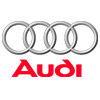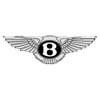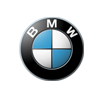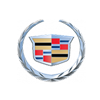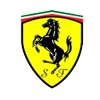Imagine Lifestyles is proud to offer luxury Land Rover and Range Rover Car Rentals in Miami, FL, South Florida, Los Angeles, CA, New York, NY and Chicago, IL.
Learn more about the history of these luxury cars below, or about our complete fleet of luxury car rentals.
Land Rover Beginnings
Since its launch at the Amsterdam Motor Show, in the spring of 1948, Land Rover has survived a remarkable history. Making it the second eldest four-wheel drive brand, and certainly, one of the most luxurious, all-terrain vehicles successfully sold for over six decades. Land Rover, now a successful manufacturer of multi-purpose vehicles (MPVs), is headquartered in Solihull, England. Land Rover began as a model series in the Rover Company, which was a British automobile manufacturing company originally established as Starley & Sutton Co. of Coventry in 1878. That first Land Rover model prouced by the Rover Company was developed by the Wilks brothers.
In 1948, Maurice Wilks was head designer of the Rover Company. Wilks first sketched the Land Rover design while on his farm in Newborough, Wales. Inspiration for the Land Rover came from an American World War II jeep that Wilks drove on his farm. As steel was in short supply after the war a rustproof alloy, of aluminum and magnesium, called Birmabright was substitued in the Land Rover design. Birmabright’s resistance to corrosion helped build a strong reputation of longevity for Land Rover. Studies claim that 75% of all Land Rovers ever built are still in use. In fact, Land Rover clients often refer to other four by fours as “disposables.”
Land Rover Through the Years
In 1958 a second series Land Rover was launched under the Rover Company. Then in 1961, Land Rover went into production on a third series model, at which time the Rover Company was bought out. Leyland Motors, Ltd. which later became British Leyland, bought out the Rover Company and its subsidiary Land Rover. In 1971, the series three Land Rover, called Range Rover, was introduced and the Rover Company was renamed Rover Triumph.
In 1975, British Leyland collapsed and the Ryder Report recommended that Land Rover become its own distinct entity. Thus, Land Rover became a new vehicle division called the Land Rover Leyland Group. By 1976 the one millionth Land Rover vehicle left the production line.
Land Rover Ownership
In 1986 British Leyland plc became the Rover Group plc. The Rover Group was then privatized and became part of the British Aerospace as just Rover. In March of 1987, Range Rover was introduced into the U.S market. Then in 1994 BMW bought the Rover Group and broke it up. Land Rover was sold to Ford for almost $2 billion and was put into their Premier Automotive Group.
Under Ford the third-generation Range Rover was introduced in 2002. Then in 2005, the third-generation Discovery/LR3 and the Range Rover Sport were introduced. Also in 2005, whatever was then left of the founding Rover Company collapsed under the ownership of MG Rover Group. In June 2007 the Ford Motor Company announced plans to sell Land Rover and Jaguar Cars and break up PAG. Many companies expressed interest in taking over the Jaguar Land Rover subsidiary but in March 2008 Jaguar Land Rover was officially purchased by Tata Motors. Today, Land Rover is one of the longest surviving Four-wheel drive (4WD) brands, coming second only to Jeep.
Land Rover Models
Since its first design, their have been multiple models of Land Rover, including those developed for public release and those designed for the UK Ministry of Defense. Models released for sale to the general public include: Series I, II, IIA, III, Defender, Freelander, Freelander 2, Discovery, Discovery 2, Discovery 3, Range Rover, Range Rover Classic, Range Rover Sport, and those released to the Ministry of Defence include: 101 Forward Control, ½ ton Lightweight, Land Rover Wolf, SNATCH, 109 Series ambulances, Range Rover Fire Appliance, and the 130 Defender ambulance. Those developed for military use have since been imperative to the British Armed Forces.

